
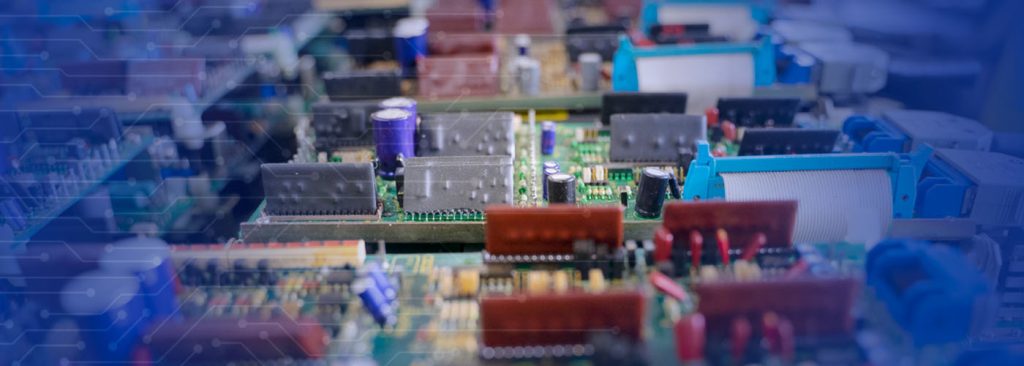
Printed circuit boards (PCBs) are the building blocks of most electronic devices, so they’re valuable in a range of industries and crucial in the manufacturing process of circuit boards. If you’re interested in electronic components and supplies, continue reading to learn about what circuit boards are, what they are used for, common components, what the different components do, circuit board components identification and our PCB manufacturing and assembly services.
Printed circuit boards are electrical parts that go into making circuit boards and are ubiquitous in the electronics industry. You’re likely to find a circuit board in a device you use every day. Understanding the basics of PCB design, construction and components can give you an idea of what these circuit boards are used for and how they operate.
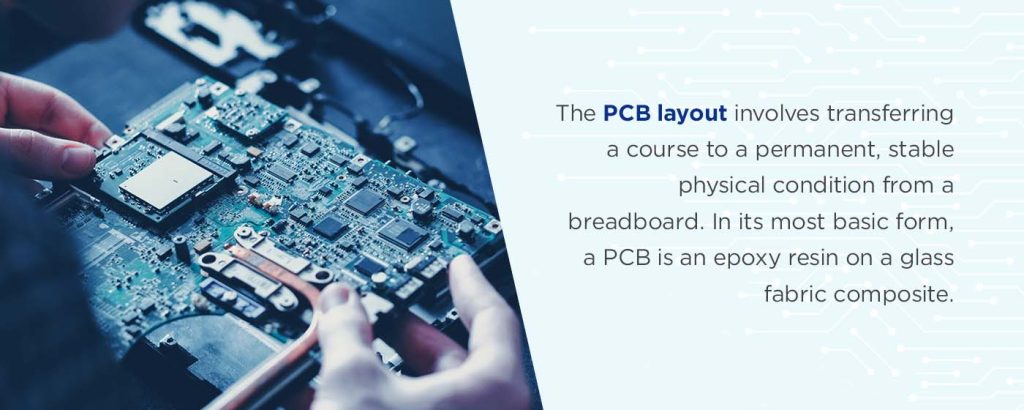
The PCB layout involves transferring a course to a permanent, stable physical condition from a breadboard. In its most basic form, a PCB is an epoxy resin on a glass fabric composite. Copper lines and pads are connected and attached to this board after being cut from a copper layer.
Also known as traces, copper lines allow the electrical charge to flow via the PCB and power the different components situated on the board. These copper lines function similarly to wires, guiding the electric current to the proper destination. PCBs come in multiple setups — single-sided, double-sided or multi-layer:
The silkscreen and the solder mask sit on top of the copper layer. The solder mask gives the PCB its green color. This insulates the copper from metal parts that may come in contact with it, but parts of the metal will stay exposed so you can solder to them. On top of the solder mask, the silkscreen sits and has numbers and letters that make PCB assembly easier.
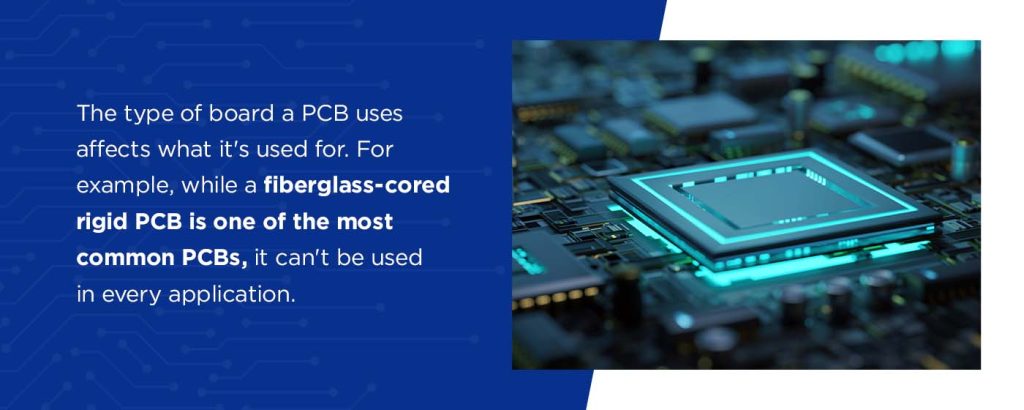
There are several common uses for PCBs, including:
The type of board a PCB uses affects what it’s used for. For example, while a fiberglass-cored rigid PCB is one of the most common PCBs, it can’t be used in every application. Instead, metal-cored and flexible boards may be used.
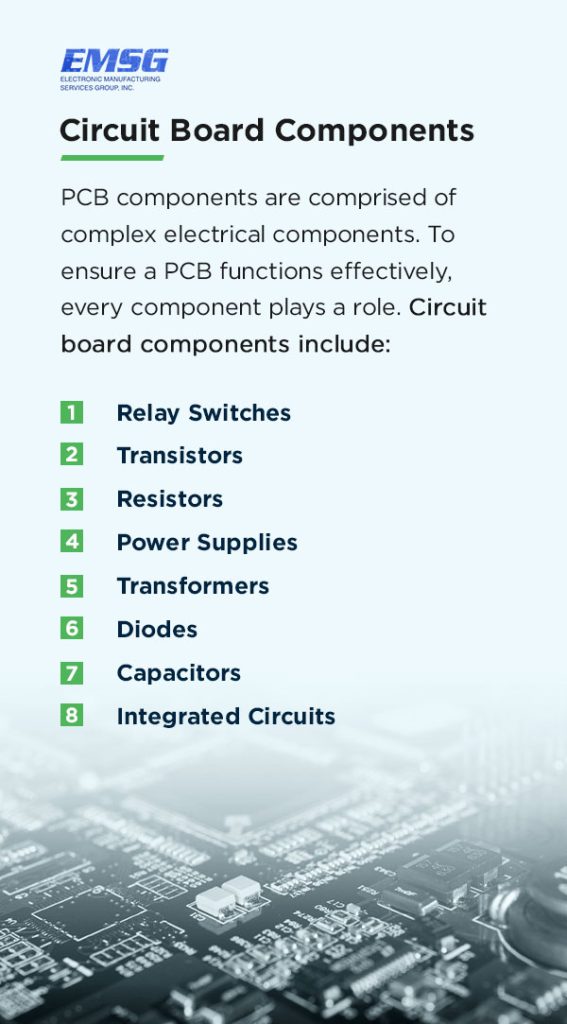
PCB components are comprised of complex electrical components. To ensure a PCB functions effectively, every component plays a role. If any of the components fail, the PCB may not function as intended. Circuit board components include:
Printed circuit boards include relay switches, which turn the power on and off. When a relay switch is on, it’s open, and the current can pass through it. When the relay switch is off, it’s closed, and the current can’t pass through it.
There are two types of transistors — field-effect transistors and bipolar transistors.
When you bring a negative voltage near the center of a strip of n-type material, nearby electrons are repelled and form holes. This transforms the middle of the strip into p-type material. The field-effect transistor (FET) gets its name from this change in polarity. When voltage is applied, two p-n junctions exist along the strip. One junction is reverse-biased, and because these junctions can’t conduct, the current can’t flow through the strip.
You can use the field effect to create a transistor that turns the current on and off. This is possible by applying and removing a small voltage to create or eliminate reverse-biased diodes. The gate is the area where the voltage is applied. The transistor strip and gate are separated by a thin layer of insulation. This prevents the gate from short-circuiting the flow of electrons via the semiconductor from a source to a drain.
A FET is great for building logic circuits, as they need only a small current when switching. Current isn’t needed to hold the transistor in an “off” or “on” state. Instead, the voltage maintains the state. With this type of switching, you can preserve the battery life. A FET is unipolar because the main conduction method is electrons or holes, but not both.
A bipolar transistor simultaneously uses electrons and holes to conduct. Like a field-effect transistor, a bipolar transistor contains n-type and p-type materials configured in output, middle and input regions. However, in a bipolar transistor, these regions are known as the collector, base and emitter.
While FETs rely on secondary voltage sources to change the polarity under the gate, a bipolar transistor uses a secondary voltage source for providing adequate energy that allows electrons to pass through the reverse-biased base-collector junction. Energized electrons jump into the collector, completing the circuit. Keep in mind that even highly energetic electrons require a very thin middle section of p-type material to pass through each junction.
Bipolar base regions can be developed to be smaller than CMOS transistor gates, which enables a bipolar transistor to operate more quickly. This is why you’ll find bipolar transistors used in applications that require speed like radio-frequency integrated circuits. Though a bipolar transistor is faster, a FET uses less current. The type you select depends on the application and whether you require power savings or speed.
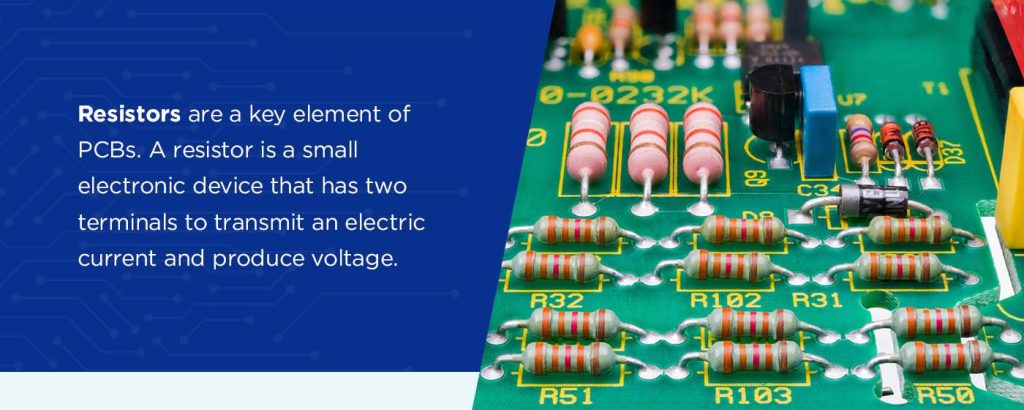
Resistors are a key element of PCBs. A resistor is a small electronic device that has two terminals to transmit an electric current and produce voltage. This component resists the current flow by dissipating the electric power as heat. You can use an ohmmeter to test them. The resistor should first be isolated to ensure test results are associated only with the resistor and aren’t compromised by other components’ signals. The results from a digital multimeter tend to be more accurate than the results from an analog meter.
PCB testing basics for a resistor involve first identifying an expected accurate reading for this resistor. You’ll then connect the resistor to the multimeter leads and run a test. Results that are too high could indicate an open resistor or one with a higher value. Typically, other circuit components lead to a decrease in the reading, so a higher value may indicate a potential problem.
For your power supply, you’ll need to select the best type of power source for your device. Depending on where the device will be used, you’ll decide between DC and AC input. A battery may power the entire PCB. The power supply provides charge, or voltage, to your circuit. If the power supply wears out, your PCB may stop functioning.
Other circuit board components may be used to regulate the power supply, such as relay switches and transformers. Components in the circuit board take or store the charge from your power supply.
A transformer consists of two coils. The main function of these coils is to stop or reduce the power supply. As a result, a transformer is considered a passive device in a PCB.
This means the primary function of this device is to dissipate or store energy rather than generate power. As with other components like transistors and diodes, you’ll only need to replace transformers after a long period of service, as these components tend to have a longer life span.
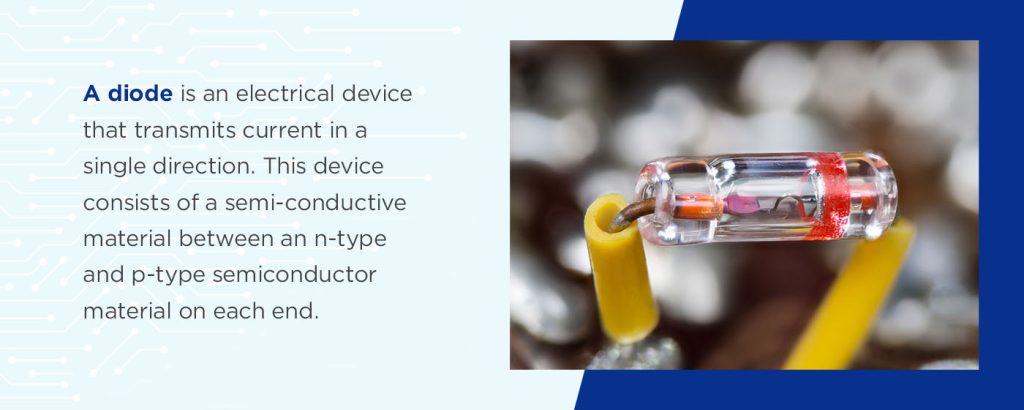
A diode is an electrical device that transmits current in a single direction. This device consists of a semi-conductive material between an n-type and p-type semiconductor material on each end. A diode blocks current in the opposing direction while enabling current in a single direction.
Due to its composition, the behavior of a diode can be manipulated. Testing diodes is a sensitive operation and can cause irreparable damage if performed incorrectly. Professionals should be consulted before attempts to test electrical equipment are made.
When the diode is ready for testing, one end should be disconnected from the circuit board. Since digital meters don’t always register leaky diodes, an analog meter should be used. Identify the black and red meter probes and connect the red probe to the anode and the black probe to the cathode. The diode is forward-biased if the meter registers resistance, the diode could be leaky if the meter registers two readings and the diode could be open if the meter registers no reading.
A capacitor is an electronic device that stores energy as an electrostatic field. This circuit board material is composed of an insulating material that is placed between conductive plates. In a PCB, capacitors can prevent the flow of direct current and enable the flow of indirect current.
While applying DC voltage to a capacitor, each conductive plate stores the electric charge. Current flows when the capacitor is storing energy and stops flowing when the capacitor is full. A dielectric material, which is the material used as the insulating material, determines the capacitor type.
Silver mica, polycarbonate and ceramic are common insulator materials. In a PCB, the board can create a capacitor with alternating layers of ground conductor, powder conductor and metal conductive areas, which leads to a stable capacitor.
Decoupling capacitors can also be found within PCBs to reduce the effects and noise of other elements on the circuit board. This is accomplished by routing the noise through the capacitor, where excess energy is stored. To test capacitors in PCBs, one end should be detached from the circuit. The DC voltage power supply should match the capacitor’s range to avoid overloading the device.
A few outcomes are possible:
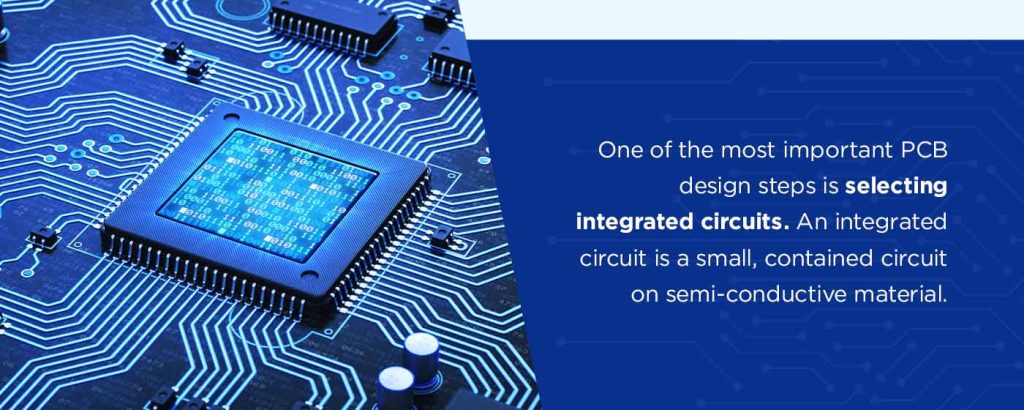
One of the most important PCB design steps is selecting integrated circuits. An integrated circuit is a small, contained circuit on semi-conductive material. Integrated circuits function like amplifiers, oscillators or timers. Typically made of silicon, this component is a small wafer.
Integrated circuits are capable of holding numerous capacitors, transistors and resistors. Every integrated circuit uses the same principles of resistance, current and voltage. The equation V=IR determines several circuit design choices. Integrated circuits can be used in several practical electronic applications.
A digital circuit involves numerous components. As a result, a significant portion of the design process is accomplished by copying and reusing circuit functions, particularly with digital design software that includes libraries with prestructured circuit components.
Components in these libraries contain contact points in predetermined areas and are of similar height. They may also have other rigid conformities to ensure they fit together, no matter how the layout is configured. Digital circuits require a less-detailed approach. This means digital analysis software overlooks individual components for logic functions.
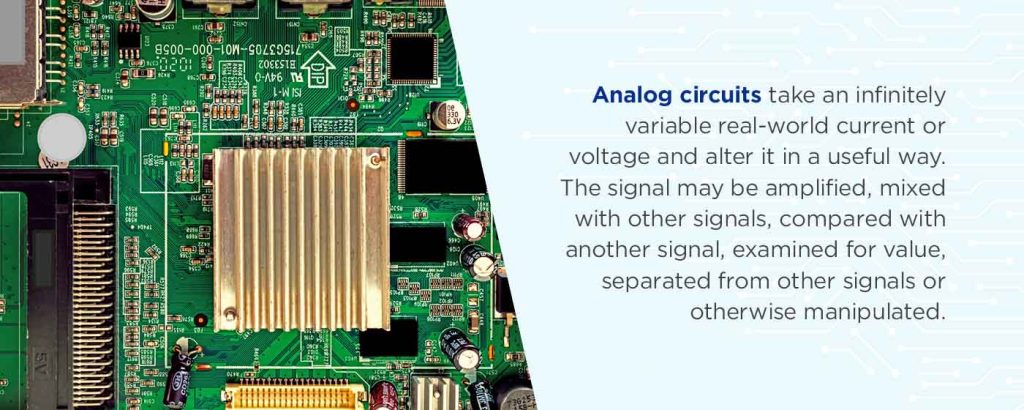
Analog circuits take an infinitely variable real-world current or voltage and alter it in a useful way. The signal may be amplified, mixed with other signals, compared with another signal, examined for value, separated from other signals or otherwise manipulated.
For analog design, the selection of each individual component, placement, connection and size is essential. There are several choices to make, such as whether a connection should be wider than another, whether a wire can overlap another or whether a resistor should be oriented perpendicular or parallel to another. Each decision and detail influences the end product’s final performance.
Component values were often calculated by hand when integrated circuits were simpler. For example, a gain of an amplifier could be calculated using the ratio of two resistors. With the resistor value needed for the supply voltage used and amplifier gain, you can then determine the current in the circuit. When designs became increasingly complex, devices were characterized by using laboratory measurements.
Whether you use digital or analog circuits depends on the circuit’s function. The layout and design of an analog circuit are more demanding of time, teamwork, experience and innovation, especially with higher circuit frequencies. Digital circuits require different skills than analog circuits.
Some circuit designs include both digital and analog circuitry. These are known as mixed-signal chips.
For these circuits, standard digital and analog simulators tend to be insufficient. Special behavioral simulators are instead required, using the same simplifying idea as digital simulators to model a circuit rather than an individual transistor. A behavioral simulator is mainly designed to speed up analog simulations of a mixed-signal chip.
The challenge with behavioral simulation is ensuring the accuracy of the analog circuit function model. Every analog circuit is unique, so the system may need to be designed separately for both the circuitry and the model for the simulator.
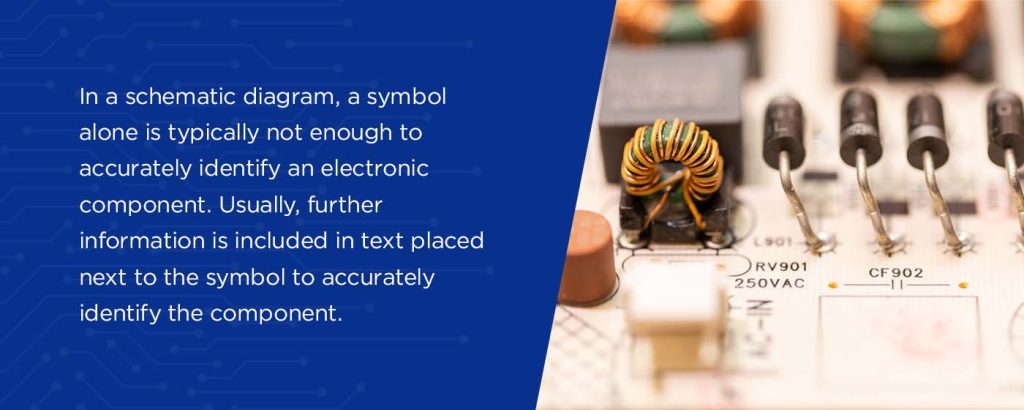
In a schematic diagram, a symbol alone is typically not enough to accurately identify an electronic component. Usually, further information is included in text placed next to the symbol to accurately identify the component.
This additional information may include the following:
If you can’t identify a component with a symbol, look for the above notations instead.
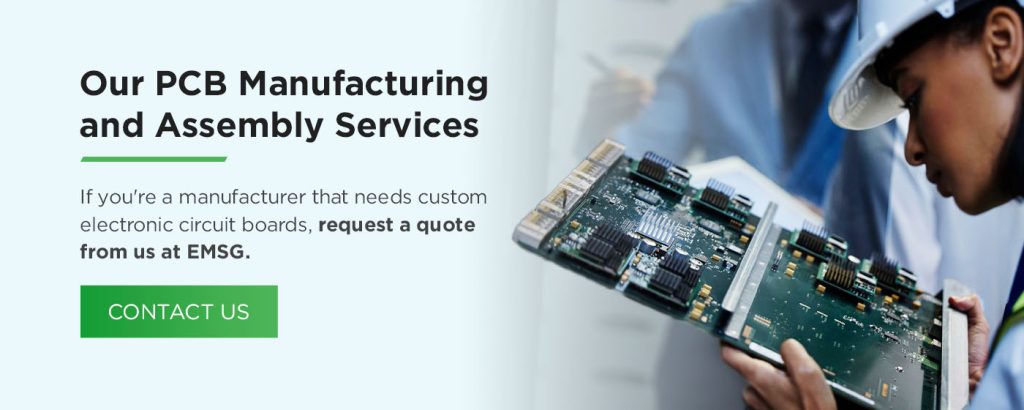
Electronic Manufacturing Services Group, Inc. is a full-service printed circuit board assembly company that has been in business since 1995. We provide small-to-medium batch services for anything under 50,000 parts or components, which helps us ensure we provide high-quality products. With ISO 9001 certification, we adhere to scalable, measurable quality control practices.
We can provide the following PCB manufacturing services:
If your assembly needs extensive hand labor, we can provide the detailed hand assembly you need. For today’s business, outsourcing your electronic assembly is essential. We serve the following industries:
We’re based in York, Pennsylvania, and serve the regional area. We have a machine capable of populating a 48-inch continuous board. The benefits of choosing our services include:
If you’re a manufacturer that needs custom electronic circuit boards, request a quote from us at EMSG. To learn more about our timely services, product excellence and value, contact us today.